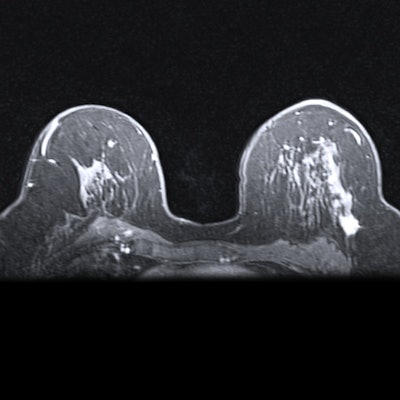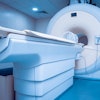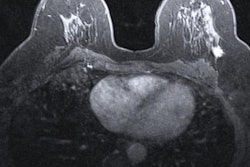
A new study suggests that breast MRI may not be useful in screening women with certain types of high-risk breast lesions. The authors recommend using mammography instead, in a September 28 study in Annals of Surgical Oncology.
Previous research has shown that breast MRI has screening benefits over mammography among women at high risk of cancer. But a team led by Dr. Alison Laws of Brigham and Women's is suggesting that mammography alone appears to be a viable way to screen women with so-called high-risk lesions like atypical ductal/lobular hyperplasia or lobular carcinoma in situ.
"Most high-risk lesion patients should be considered to have moderately elevated breast cancer risk, and management efforts should focus on adherence to conventional screening breast imaging with annual mammography as well as strong consideration for use of chemoprevention," Laws and colleagues explained.
Current guidelines from organizations such as the American Cancer Society (ACS), the National Comprehensive Cancer Network (NCCN), and the American College of Radiology (ACR) recommend that women with a 20% to 25% lifetime risk of breast cancer -- and those with dense breast tissue -- undergo regular screening breast MRI as an adjunct to mammography.
Yet these groups acknowledge that the use of screening breast MRI in women with high-risk lesions may not be necessary, especially since it has downsides like false positives (that may then prompt unnecessary recalls and/or biopsies) and increased healthcare costs, according to the authors.
"Patients with high-risk lesions were under-represented in the landmark screening MRI studies, which primarily enrolled either those with pathogenic variants in breast cancer susceptibility genes or 20% to 25% lifetime risk by family history-based models," they wrote. "Thus, the role of screening MRI for patients with high-risk lesions is unclear."
Laws and colleagues conducted a study that included 699 women who presented at the Dana-Farber Brigham Cancer Center's high-risk breast cancer clinic between 2015 and 2020 with atypical ductal/lobular hyperplasia (542) or lobular carcinoma in situ (157). The women were categorized into two groups: Those who had undergone mammography screening alone (540) and those who had undergone both mammography and breast MRI (159).
The researchers explored how the addition of breast MRI affected cancer detection and biopsy rates over a four-year follow-up period, accounting for factors like age, race, body mass index, menopausal status, breast density, family history, and lesion type. A total of 13 invasive or ductal carcinoma in situ (DCIS) cancers were identified among the study cohort, with eight of these discovered on mammography alone and five on mammography plus breast MRI.
The study results indicated that the adjusted breast cancer detection rate was the same between the two groups at four-year follow-up, at 3.6%. But they also revealed that breast biopsy rates were higher among women who had both screening mammography and MRI compared with those who had screening mammography alone -- 30.5% compared with 12.6%.
"With short-term follow-up evaluation, we found that the rates of breast cancer detection were no higher with the use of screening MRI than with mammography alone," the investigators wrote. "Breast cancer characteristics were favorable regardless of screening group, and more than half of the cancers that developed in those receiving breast MRI did not require MRI for detection."
The takeaway? Don't assume it's necessary to add breast MRI into the screening protocol for women with high-risk lesions, according to the authors.
"We will continue to examine longer-term cancer rates and features as well as oncologic outcomes of this cohort, but these early findings lend uncertainty to the benefit of screening MRI for patients with high-risk lesions," they concluded.



.fFmgij6Hin.png?auto=compress%2Cformat&fit=crop&h=100&q=70&w=100)





.fFmgij6Hin.png?auto=compress%2Cformat&fit=crop&h=167&q=70&w=250)











